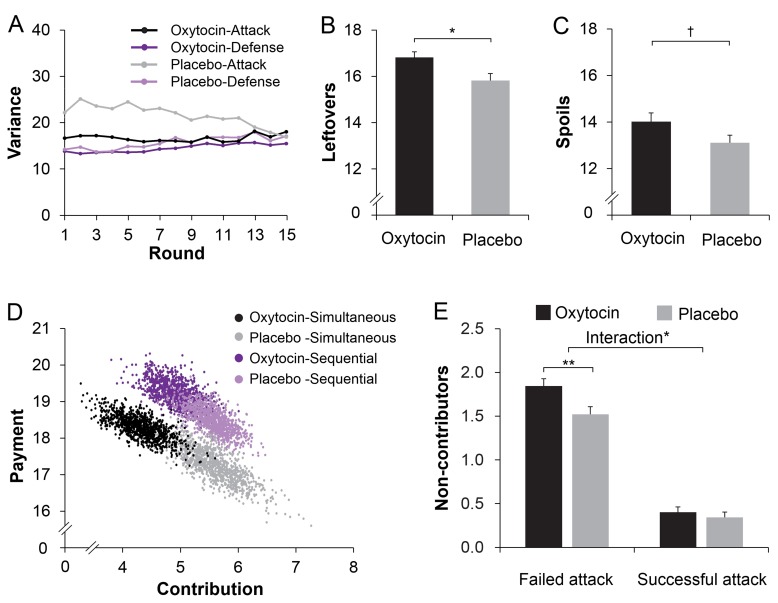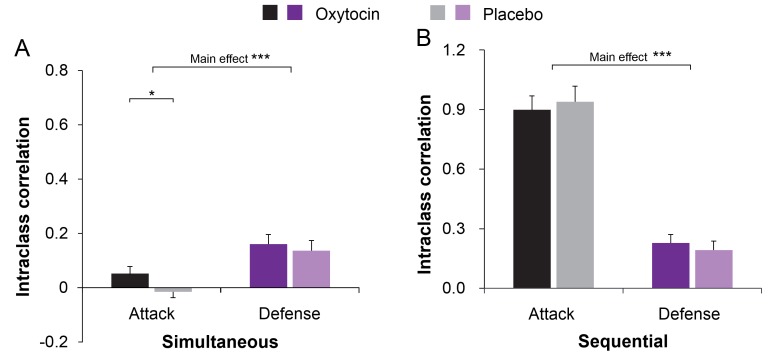Figure 5. Oxytocin modulates within-group coordination.
(A) Giving individuals oxytocin rather than placebo enables better coordination (lower within-group variance) in attacker groups, especially in early rounds. Curves were smoothed with a moving average window of three investment rounds. (B/C) Giving attackers oxytocin rather than placebo increases their leftovers when not winning the conflict (B) and spoils from winning conflicts (C) (N = 76 because four attacker groups never won). (D) Bootstrapping illustration of the oxytocin shifts on the contribution and payment. Bivariate distributions of 1000 bootstrapped sample means for each condition (Treatment x Procedure) plotted against the contribution and payment. (E) Oxytocin increased non-contributing attackers only in failed attacks but not in successful attacks. Connectors indicate significant difference, with † p < 0.10; *p < 0.05; **p < 0.01.


